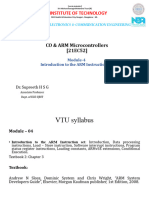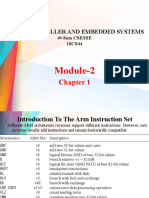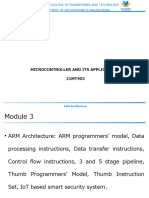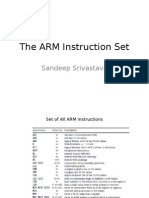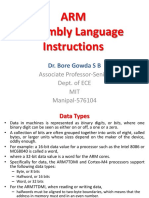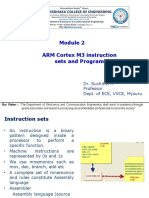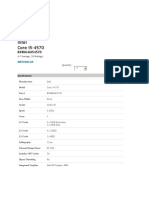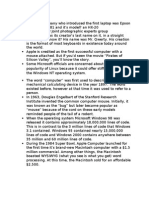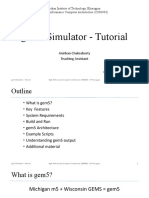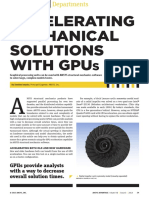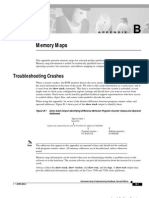0% found this document useful (0 votes)
10 views43 pagesModule 5 1
Module-5 introduces the ARM instruction set, focusing on data processing, load-store instructions, and branching. It covers various types of instructions including arithmetic, logical, comparison, and multiply instructions, as well as addressing modes for memory operations. Additionally, it discusses stack operations and the unique features of the ARM architecture such as the barrel shifter and conditional execution.
Uploaded by
vedaCopyright
© © All Rights Reserved
We take content rights seriously. If you suspect this is your content, claim it here.
Available Formats
Download as PDF, TXT or read online on Scribd
0% found this document useful (0 votes)
10 views43 pagesModule 5 1
Module-5 introduces the ARM instruction set, focusing on data processing, load-store instructions, and branching. It covers various types of instructions including arithmetic, logical, comparison, and multiply instructions, as well as addressing modes for memory operations. Additionally, it discusses stack operations and the unique features of the ARM architecture such as the barrel shifter and conditional execution.
Uploaded by
vedaCopyright
© © All Rights Reserved
We take content rights seriously. If you suspect this is your content, claim it here.
Available Formats
Download as PDF, TXT or read online on Scribd
/ 43









